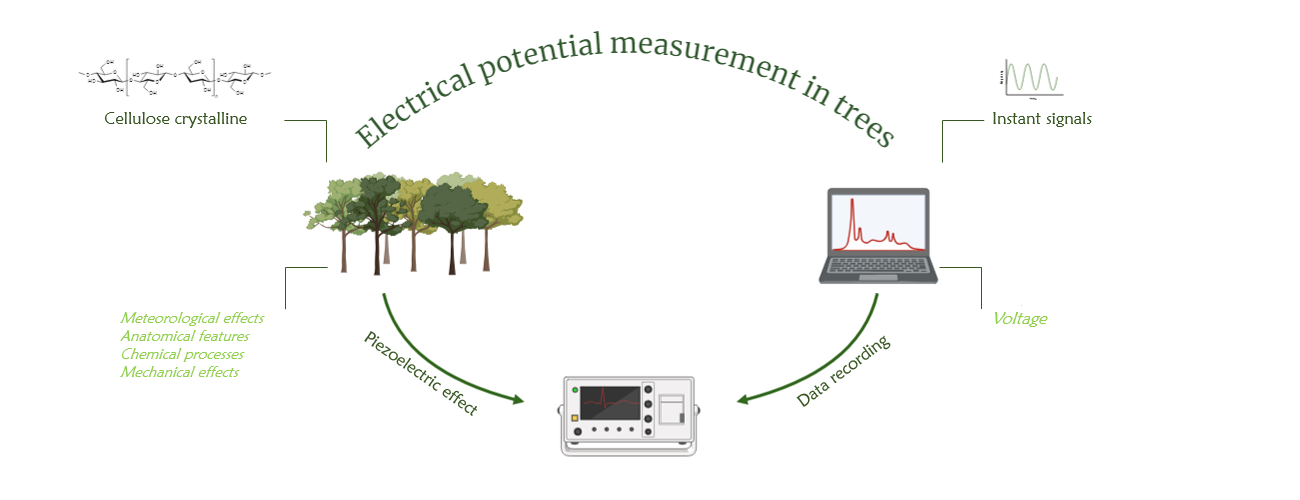 Open Access
Open Access
REVIEW
A Review of Piezoelectric Phenomena as a Key Characteristic of Wood
1 Department of Forest Industrial Engineering, Faculty of Forestry, Bartin, 74100, Turkey
2 Department of Industrial Engineering, Faculty of Engineering and Natural Sciences, Hatay, 31200, Turkey
* Corresponding Authors: Zeynep Eda Özan. Email: ; Deniz Aydemir. Email:
Journal of Renewable Materials 2024, 12(12), 1985-2016. https://doi.org/10.32604/jrm.2024.056000
Received 11 July 2024; Accepted 21 October 2024; Issue published 20 December 2024
Abstract
Piezoelectric materials convert mechanical energy into electrical energy, acting as renewable energy sources. As smart materials, they respond to environmental changes by altering their properties. When pressure is applied, their structure separates positive and negative charge centers, producing opposite charges on crystal surfaces. This generates an electric field and a measurable potential. Wood, a natural material, also exhibits piezoelectric behavior. The piezoelectric effect of wood was first discovered by Russian scientists in 1940–1950. Then, in 1955, Fukada analyzed both the direct and inverse piezoelectric effect of wood and scientifically proved that this natural material has piezoelectric properties. Since then, much research has been done on the piezoelectric effect of wood. Research conducted between the 1960s and 1990s contributed to a deeper understanding of the piezoelectric properties of wood. Since the 2000s, various methods have been developed to enhance wood’s piezoelectric performance using modern research techniques and advanced analysis. These studies improve the understanding of wood’s piezoelectric properties and their potential applications. The research presents a chronological review of scientific studies from the discovery of the piezoelectric effect of wood to the present day. In addition, the piezoelectric and electric potential behavior obtained from planted trees and academic studies on the energy generation purposes of wooden structures are comprehensively examined. Wood’s potential as a natural piezoelectric material is significant, particularly for renewable energy sources and smart material technologies. Optimizing its piezoelectric properties aims to enhance energy harvesting, sensor performance, and other advanced technological applications.Graphic Abstract

Keywords
Cite This Article
 Copyright © 2024 The Author(s). Published by Tech Science Press.
Copyright © 2024 The Author(s). Published by Tech Science Press.This work is licensed under a Creative Commons Attribution 4.0 International License , which permits unrestricted use, distribution, and reproduction in any medium, provided the original work is properly cited.


 Submit a Paper
Submit a Paper Propose a Special lssue
Propose a Special lssue View Full Text
View Full Text Download PDF
Download PDF Downloads
Downloads
 Citation Tools
Citation Tools